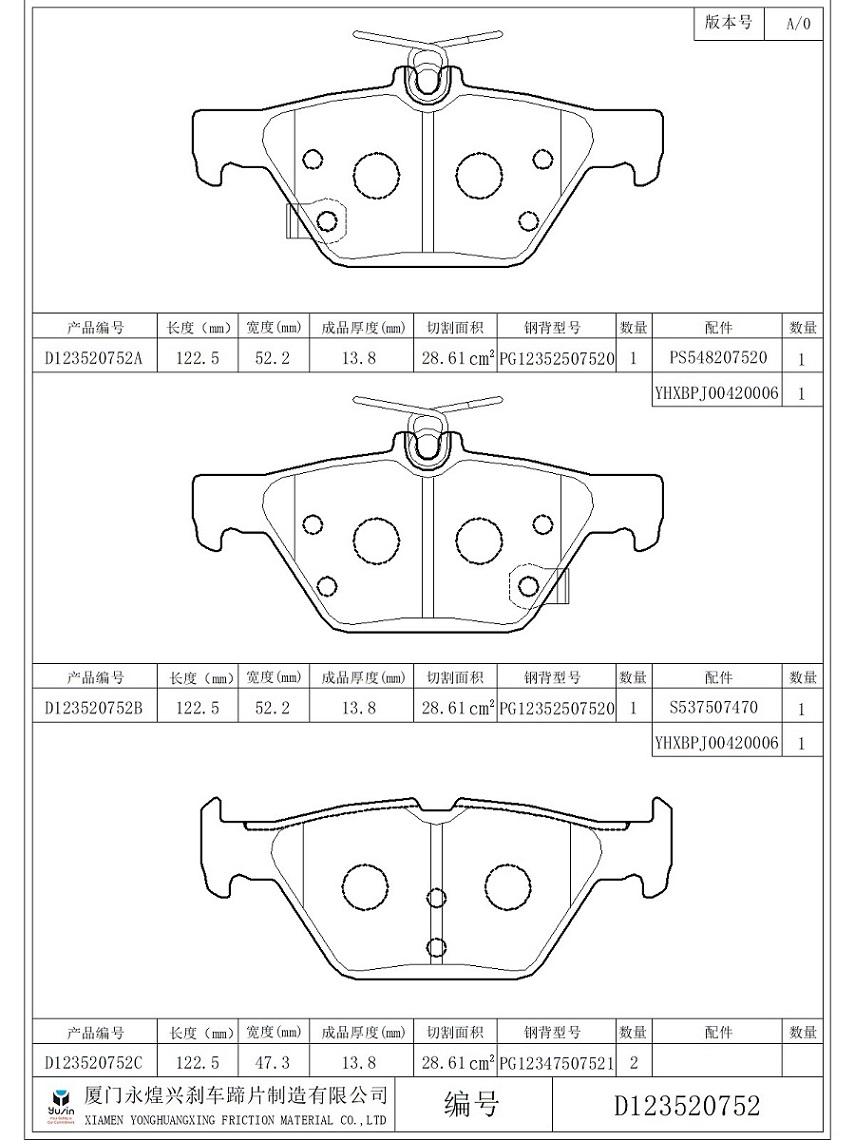The Unsung Hero: How a Brake Pad Contributes to the Braking System
2024-02-28
When you press down on the brake pedal, you expect your vehicle to come to a smooth and controlled stop. Behind this seemingly simple action lies a complex interplay of components, each playing a crucial role in the braking process. Among these components, the brake pad stands out as a key player, responsible for converting kinetic energy into thermal energy and ultimately bringing your vehicle to a halt. In this blog post, we'll explore the vital contribution of the brake pad to the braking system and how it ensures your safety on the road.
Friction Transformation
1. Contact with Rotors: As you apply the brakes, hydraulic pressure from the master cylinder forces brake fluid into the calipers, squeezing the brake pads against the rotating brake rotors (or discs) attached to each wheel.
2. Friction Generation: The friction material on the surface of the brake pads makes direct contact with the rotors, creating immense friction. This friction transforms the kinetic energy of the moving vehicle into thermal energy, generating heat in the process.
Deceleration and Stopping Power
1. Kinetic Energy Conversion: The intense friction between the brake pads and rotors causes the rotating motion of the wheels to slow down rapidly. This conversion of kinetic energy into thermal energy results in the vehicle decelerating.
2. Stopping the Vehicle: The combination of friction and pressure applied by the brake pads effectively slows down the rotation of the wheels until they come to a complete stop. This process halts the forward motion of the vehicle, allowing it to safely come to rest.
Consistency and Control
1. Smooth and Controlled Braking: The brake pads play a crucial role in providing smooth and controlled braking performance. Their ability to apply consistent pressure to the rotors ensures that the vehicle decelerates evenly without sudden jolts or jerks.
2. Temperature Regulation: Brake pads also help regulate the temperature of the braking system by dissipating heat generated during braking. This prevents overheating of the brakes, which could lead to brake fade and compromised braking performance.
Safety Enhancement
1. Shorter Stopping Distances: High-quality brake pads with superior friction materials can significantly reduce stopping distances, enhancing vehicle safety. This allows drivers to respond more effectively to sudden stops or emergency situations on the road.
2. Predictable Performance: Well-maintained brake pads ensure predictable braking performance, giving drivers confidence in their vehicle's ability to stop when needed. Consistent braking behavior contributes to overall road safety for both the driver and other road users.
Conclusion: The Silent Guardian
In conclusion, while the brake pad may seem like a small and unassuming component within the braking system, its contribution to vehicle safety cannot be overstated. By converting kinetic energy into thermal energy through friction, brake pads play a fundamental role in slowing down and ultimately stopping your vehicle. Their consistent performance, temperature regulation capabilities, and safety enhancements make them an indispensable part of every vehicle's braking system. So, the next time you hit the brakes and come to a smooth stop, remember to appreciate the silent guardian working tirelessly behind the scenes—the humble brake pad.



